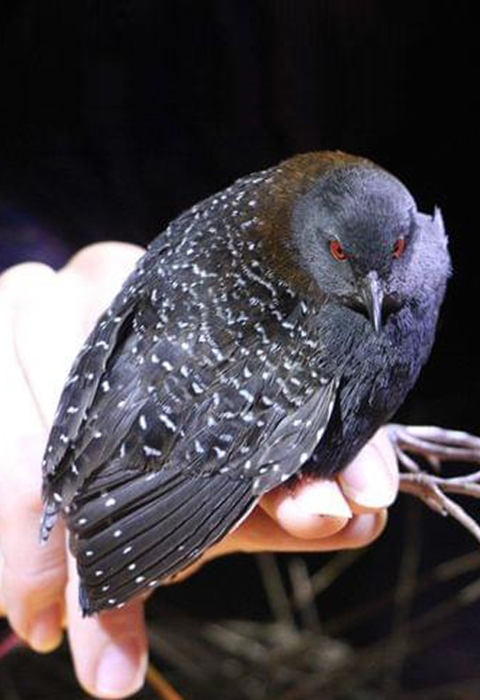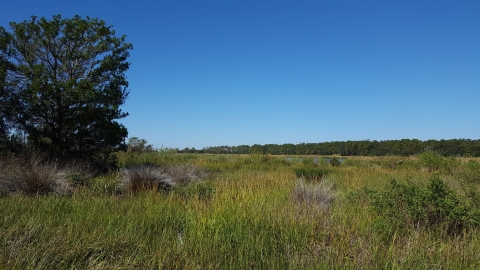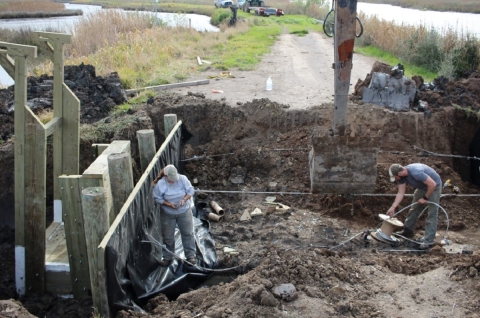The Eastern black rail is more often heard than seen, if observed at all. This small, secretive marsh bird is listed as threatened under the Endangered Species Act and lives in shallow, grassy wetlands along the Atlantic and Gulf Coasts. In South Carolina, the black rail has found a home in a unique wetland system with more than 300 years of human involvement. While this presents a daunting challenge, a recent South Carolina Coastal Program partnership put conservation on the ground and preserved a cultural heritage.
The Tom Yawkey Wildlife Center, a 20,000-acre protected area managed by the South Carolina Department of Natural Resources (DNR), includes a variety of habitats such as beach, pine savanna, and maritime forest. The preserve was one of a series of rice plantations that stretched over several hundred thousand acres along the South Carolina coast until the late 19th century. The rice culture eventually disappeared and fields reverted to natural wetlands or were managed for waterfowl and wading birds. Today, the Yawkey Center continues to manage its rice field impoundments with wooden water control structures, called rice trunks, just as they did centuries ago.
In South Carolina, black rails inhabit the old rice fields where they’re to reach aquatic invertebrates, their main food source. At the same time, their nests are protected from flooding. Yawkey, according to annual surveys dating to 2014, is one of the top South Carolina locations for black rails.
Management of the Yawkey Center, though, has been challenging. Located between two major estuaries, the Santee River Delta and Winyah Bay, the property is particularly prone to flooding. Record floods and wind between 2015 and 2018 led to severe erosion that threatens the stability of the brackish ponds where black rails live. A major flood could damage the impoundments and destroy the ecosystem that the birds need to survive.
DNR biologist Christy Hand reached out to the Coastal Program for help managing the Yawkey impoundments. The DNR and the Coastal Program had collaborated for many years on improving black rail habitat in the impoundments. The Coastal Program, along with DNR biologists Mark McAllister and Jamie Dozier, identified two main management priorities. First, aging rice trunks were replaced to allow DNR to manage water levels in a field where black rails may one day nest. Second, Yawkey staff identified areas prone to severe erosion that will be rebuilt.
Construction started in the spring of 2020 and is ongoing. The black rails, apparently, aren’t waiting for completion. The birds were heard singing in the restored rice field impoundment this spring.
The Coastal Program will continue working with DNR to improve habitat for black rails at the Yawkey Center and throughout the state. With careful collaboration, the black rail partnership will be a true success story.






